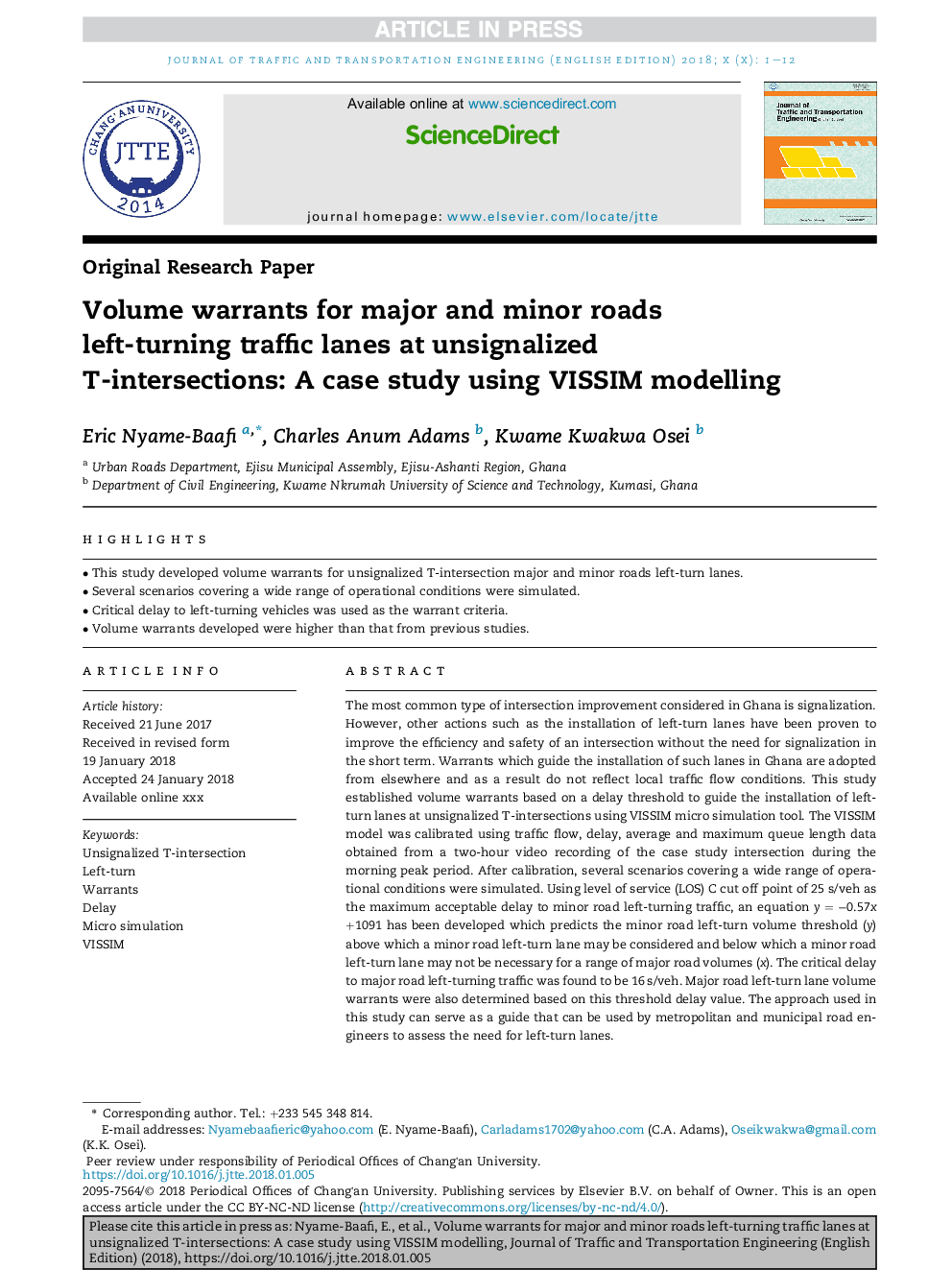| Article ID | Journal | Published Year | Pages | File Type |
|---|---|---|---|---|
| 10150760 | Journal of Traffic and Transportation Engineering (English Edition) | 2018 | 12 Pages |
Abstract
The most common type of intersection improvement considered in Ghana is signalization. However, other actions such as the installation of left-turn lanes have been proven to improve the efficiency and safety of an intersection without the need for signalization in the short term. Warrants which guide the installation of such lanes in Ghana are adopted from elsewhere and as a result do not reflect local traffic flow conditions. This study established volume warrants based on a delay threshold to guide the installation of left-turn lanes at unsignalized T-intersections using VISSIM micro simulation tool. The VISSIM model was calibrated using traffic flow, delay, average and maximum queue length data obtained from a two-hour video recording of the case study intersection during the morning peak period. After calibration, several scenarios covering a wide range of operational conditions were simulated. Using level of service (LOS) C cut off point of 25Â s/veh as the maximum acceptable delay to minor road left-turning traffic, an equation y = â0.57x +1091 has been developed which predicts the minor road left-turn volume threshold (y) above which a minor road left-turn lane may be considered and below which a minor road left-turn lane may not be necessary for a range of major road volumes (x). The critical delay to major road left-turning traffic was found to be 16Â s/veh. Major road left-turn lane volume warrants were also determined based on this threshold delay value. The approach used in this study can serve as a guide that can be used by metropolitan and municipal road engineers to assess the need for left-turn lanes.
Keywords
Related Topics
Physical Sciences and Engineering
Engineering
Aerospace Engineering
Authors
Eric Nyame-Baafi, Charles Anum Adams, Kwame Kwakwa Osei,
